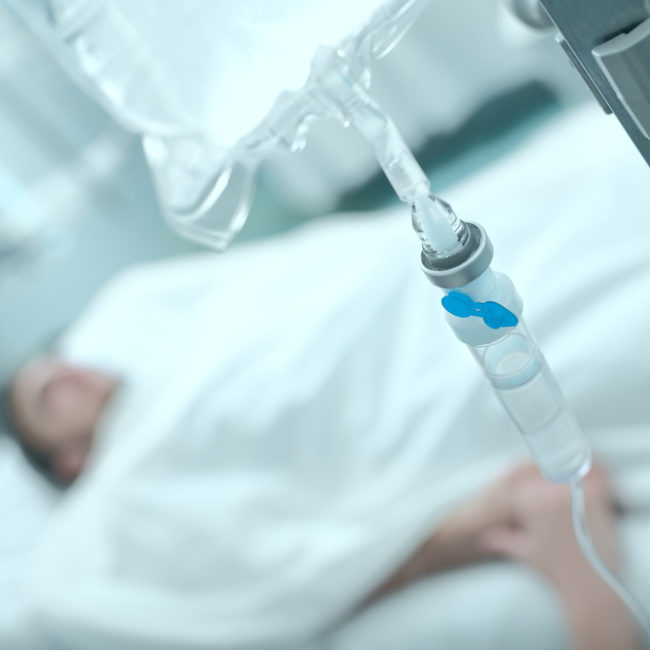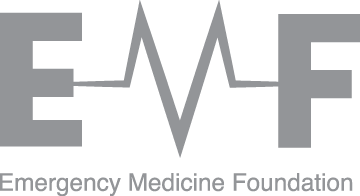Too much of a good thing: does fluid resuscitation worsen septic shock?
Grant ID: EMPJ-358R25-2016
Project Summary
Patients with infections are a leading cause of presentations to the Emergency Department (ED), with severe sepsis and infection causing an estimated 20,000 deaths each day across the world. Treatment is aimed at eradicating the infection and supporting the patient while recovery can take place. Frequently patients develop low blood pressure as a result of immune response that can ultimately result in further organ injury (termed septic shock). Intravenous fluids are recommended by international guidelines as the first line therapy in the ED to treat low blood pressure of sepsis with the hope of preventing organ injury and death. Despite 50 years of use in sepsis, the rationale for fluids remains based in theory rather than clear evidence it is effective in saving lives. Disconcertingly, there is now increasing evidence that fluids in sepsis are ineffective and may actually worsen patient survival. Despite this fluids continue to be recommended and used liberally in the ED resulting in conflict between our historical practice and the best evidence.
We have developed an animal model of septic shock and resuscitation in order to test the effectiveness of fluid resuscitation. This will allow us to both understand the true effect but also investigate the underlying physiological mechanisms of any harms.
Outcomes
The research team successfully developed a laboratory model of endotoxaemic shock for this pre-clinical trial.
Using this model, they found that following fluid resuscitation, significantly more noradrenaline was required to maintain the same mean arterial pressure in the subsequent 12 hours. Atrial natriuretic peptide increased significantly after fluid resuscitation. The rate of increase of the glycocalyx glycosaminoglycan hyaluronan was greater also.
The researchers concluded that fluid resuscitation resulted in a paradoxical increase in vasopressor requirement. Additionally, it did not result in improvements in any of the measured microcirculatory- or organ-specific markers measured. The increase in vasopressor requirement may have been due to endothelial/glycocalyx damage secondary to atrial natriuretic peptide-mediated glycocalyx shedding.
Leveraged Funds
- NHMRC grant: $AUD 980,810.56 (Understanding tissue responses to fluid resuscitation and blood transfusion during ovine sepsis to improve outcomes [ 2014 - 2017 ] Also known as: Resuscitation in Endotoxaemic Shock - Understanding Sepsis (RESUS))
- In-kind: $230,000
Dissemination
Obonyo, N.G., Byrne, L., Tung, J.P., Simonova, G., Diab, S.D., Dunster, K.R., Passmore, M.R., Boon, A.C., Hoe, L.S., Engkilde-Pedersen, S. and Esguerra-Lallen, A., 2019. Pre-Clinical study protocol: blood transfusion in endotoxaemic shock. MethodsX, 6, pp.1124-1132.
Byrne L, Obonyo NG, Diab SD, Dunster KR, Passmore MR, Boon AC, Hoe LS, Pedersen S, Fauzi MH, Pimenta LP, Van Haren F. Unintended consequences: fluid resuscitation worsens shock in an ovine model of endotoxemia. American journal of respiratory and critical care medicine. 2018 Oct 15;198(8):1043-54.
Fanning, J.P., Obonyo, N.G., Tung, J.P., Byrne, L., Simonova, G., Diab, S., Dunster, K., Passmore, M., Boon, A.C., See Hoe, L. and Engkilde-Pedersen, S., 2018. Packed Red Cell Age Associated With Adverse Cardiovascular Changes in an Ovine Model of Septic Shock Resuscitation. Circulation, 138(Suppl_1), pp.A17116-A17116.
Obonyo, N., Byrne, L., Shiino, K., Diab, S., Dunster, K., Passmore, M., Boon, A.C., Hoe, L.S., Pedersen, S., Fauzi, M. and Pimenta, L., 2018. Abstract P-559: FLUID RESUSCITATION WITH 0.9% SALINE IMPAIRS MYOCARDIAL CONTRACTILITY IN AN OVINE MODEL OF ENDOTOXEMIC SHOCK. Pediatric Critical Care Medicine, 19(6S), pp.221-222.
Byrne, L., Obonyo, N.G., Diab, S., Dunster, K., Passmore, M., Boon, A.C., Hoe, L.S., Hay, K., Van Haren, F., Tung, J.P. and Cullen, L., 2018. An ovine model of hyperdynamic endotoxemia and vital organ metabolism. Shock (Augusta, Ga.), 49(1), p.99.
Video/Presentations
Fraser, J. A pre-clinical trial: Blood transfusion in endotoxaemic shock - for better or for worse (e-poster #15604). The 12th European Congress of Emergency Medicine, EUSEM2018 (Glasgow, Scotland; 8-12 September, 2018)
Obonyo, N.G. Fluid resuscitation with 0.9% saline impairs myocardial contractility in an ovine model of endotoxemic shock (poster #175). The 9th Congress of the World Federation of Pediatric Intensive & Critical Care Societies, WFPICCS 2018 (Singapore; 9-13 June, 2018).
SHARE




